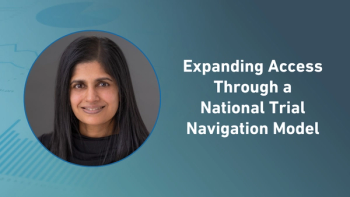
- Applied Clinical Trials-01-01-2012
- Volume 21
- Issue 1
Snapshot Shows Targeted Site Monitoring Trend
Clinical R&D organizations across the industry have been steadily moving away from the traditional approach to site monitoring using 100% source document verification (SDV) of subject eCRFs, and into a new paradigm where a targeted sampling of the subject eCRF data is verified against source charts.
SPOTLIGHT EVENT
Cambridge, MassachusettsDownload Brochure
RELATED
-
- Industry Metric Indicates Low ROI with Full Source Document Verification
- Has FDA Guidance on Risk-based Monitoring Impacted SDV Coverage Yet?More in Risk-Based Monitoring
Clinical R&D organizations across the industry have been steadily moving away from the traditional approach to site monitoring using 100% source document verification (SDV) of subject eCRFs, and into a new paradigm where a targeted sampling of the subject eCRF data is verified against source charts.
The graphic demonstrates the trend via the average percent of eCRF data marked for SDV from 2007 through 2010. The information is based on data from over 1,500 studies conducted by 50 R&D organizations, compiled by the Medidata Insights metrics warehouse.
The data reveals a steady, significant downward trend over the four year period, from a high of 85% in early 2007 to a low of 67% in late 2010. This trend is expected to continue over the coming year and beyond, particularly with the support of the recent guidance provided by FDA in support of risk-based site monitoring practices.
Each month, an Insights benchmark to highlight emerging trends in clinical development will be featured. For more on the industry benchmarks included with Medidata Insights, please visit
—Medidata Solutions,
Articles in this issue
almost 14 years ago
Applied Clinical Trials Digital Edition - January 2012almost 14 years ago
Risk & Resources to Shape Trial Operationsalmost 14 years ago
CV Safety for Developersalmost 14 years ago
Rising Proportion of New and Modified Indication Approvalsalmost 14 years ago
Risk-based Approach to Monitoringalmost 14 years ago
Limited Resource Trialsalmost 14 years ago
Imaging Pharmacovigilance Needs Overhaulalmost 14 years ago
Refined Safety AssessmentsNewsletter
Stay current in clinical research with Applied Clinical Trials, providing expert insights, regulatory updates, and practical strategies for successful clinical trial design and execution.




